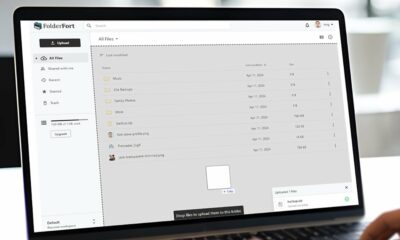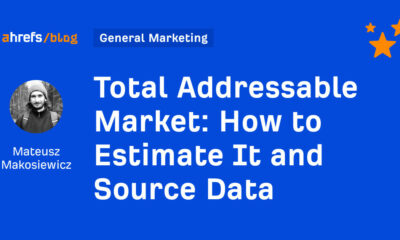TECHNOLOGY
Solving The Biggest Problems Of Big Data

Your business must have the technology, personnel, and knowledge to capture accurate, complete, and consistent data before using it for analytics and research.
A failure to do this represents one of the more prominent big data problems.
In today’s hyper-digitized world, data is a more powerful resource than money, oil and weaponry. The biggest organizations in the world, such as Google, Facebook, Amazon, collect and monetize data from various sources for a variety of purposes. Data serves as the key ingredient in such organizations’ success recipes. It is also the fuel that runs smart cities around the world. Data includes dynamic details such as consumer purchase records, location-based details, connected car information, social media posts, images captured by automated CCTV cameras in smart cities, and many, many more examples. Such endlessly growing and evolving data—which traditional computers can’t process—is exhaustively termed as big data in data science speak. Theoretically, nobody has ownership over big data as its scope is literally limitless. Big data includes all the collected and collectible data that exists in the world. Although it has always existed, using it as a resource is a concept that has taken flight only recently. So, what exactly are big data problems?
Generally, big data problems have little to do with data itself and more to do with how organizations and governments collect and handle data. Because it is such a powerful resource if you have the technology to harness it, not exploiting big data to the fullest represents a massive opportunity loss for your business. The focus here will be on arguably the biggest big data problem—bad data:

How Bad Data Affects Analytics

Today’s businesses rely heavily on real-time data collection or generation for many of their operations. About 80% of all global businesses today have a specialized analytics division for analyzing the vast amounts of data captured. Organizations invest millions of dollars every year in software applications, cloud computing and machine learning-based tools to store and process the data collected from various sources. However, all the investment and effort will be nullified if the data collected is “bad”. After all, big data analytics is driven by the philosophy of “garbage in, garbage out.” Bad data is a term that is loosely used to classify data that is incomplete, inaccurate, duplicated or lacking in consistency. Raw collected data generally tends to have several quality issues like these. Some examples of these are incomplete blood sugar data in digitized diabetes care, accidental punctuation marks in text-based data, format-based inconsistencies in the data collected from smart cities, among others.
If left unchecked, bad data can create bottleneck situations when it is used for analytics or training AI models. Bad data is one of the common causes of biased and discriminatory AI algorithms too. Here are some of the reasons why bad data is one of the more prominent big data problems:
1. Results in Misleading Insights
Businesses implement various analytical tools to draw insights from large amounts of data. However, errors can creep into such insights if duplicated data is collected. For example, when data collected from 20 different locations are duplicated, the processed output may imply that there are 40 distinctive data points. If you magnify this example exponentially to include millions of data points and duplicates, the insights drawn from that data will be inaccurate on a similar scale for businesses.
2. Results in Huge Correctional Expenses
A 2017 Gartner Data Quality Market Survey had found that poor data quality results in businesses incurring losses of up to US$15 million on average. It is safe to assume that the losses have doubled or even quadrupled in subsequent years as more than 90% of data in circulation today has been generated in the past two years alone. Inevitably, a good chunk of this data may contain inconsistencies, inaccuracies and duplication.
3. Results in Data Unreliability
As you know, data needs to be continuously captured from multiple sources for businesses or smart cities. After that, the collected data may be transmitted over long distances. During transmission, the loss of data integrity through contamination is always a possibility. Incorrect or duplicated information is not reliable for forecasting and future-bound decision-making for organizations and governments.
How Bad Data Can Be Fixed

Quality issues need to be ironed out before your business can run analytics to use the captured data. If your business regularly faces issues with data quality, consistency and completeness, here are some measures that can be adopted to resolve them:
4. Verifying the Data at Source
A large percentage of quality issues are generated at the sources where data is collected or generated from. So, such issues can be mitigated by “cleansing” the original sources. This process involves putting the freshly collected data through a round of verification to check its correctness and completeness. Normally, a good chunk of big data problems can be resolved if corrupted and low-quality data is blocked at the source.
5. Fixing Quality Issues at the ETL Phase
Customer data that is collected at various sources goes through an Extract, Transform and Load (ETL) phase before businesses can perform analytics using it. Your business can employ tools and applications that can “find and fix” the quality issues at this stage before the data goes into storage databases.
6. Using Precision Identity/Entity Resolution
This can be considered to be the most powerful measure to fix data quality issues. One of the more common marketing-related issues with customer records and databases in organizations is that the identity or residential location of customers may not be verified. So, customers living in the same household or multiple records of the same customer are stored in such databases. As a result, the same customers or households may receive the same marketing information multiple times. This duplication can be prevented by using a precision identity/entity resolution to identify such customers or households where more than one email or other forms of notification or information will not be sent.
How Other Big Data Problems Can Be Resolved

As you can see, data quality issues can be largely resolved by collecting data accurately before putting it through rounds of verification. Therefore, bad data, while one of the most common big data problems, is also something that can be reduced or even eliminated.
7. The Choice Paradox
In a data science-obsessed ecosystem, data analytics throws up several options for businesses regarding forecasts and decision-making. Generally, each forecast will have its pros and cons. This introduces issues in decision-making to minimize the opportunity losses caused due to not selecting an alternative option. Businesses can employ a CTO or seek the services of a consultancy firm to assist them with decision-making in such instances.
8. The Data Breach Issue
Data security issues also thwart big data analytics implementation for businesses. Businesses need to handle and store data more carefully so that it is kept away from tampering and breaches. Additionally, businesses can also maintain backups of databases to mitigate the impact of breaches.
Most big data problems can be resolved or minimized by scaling up investment in technology. Generally, big data problems revolve around collecting, storing, analyzing and sharing data and drawing useful insights and conclusions from it. Big data forms the basis of all operations of organizations and smart city administrators. All intelligent technologies and networks—AI, IoT, computer vision—need big data for moving forward. Big data problems act as a major roadblock in the daily functioning of businesses and technologies. Unfortunately, big data problems are fairly common, too, with about 91% of businesses reporting that they have not reached truly transformational business intelligence levels.
Addressing the big data problems enlisted above and eliminating them has eventually become the next big target in the evolutionary journey of data science and AI.
Source link


















You must be logged in to post a comment Login